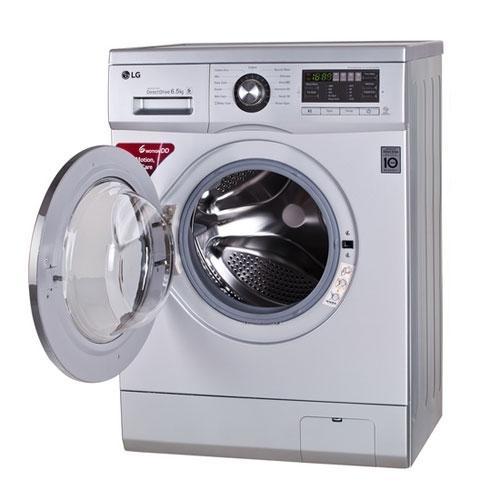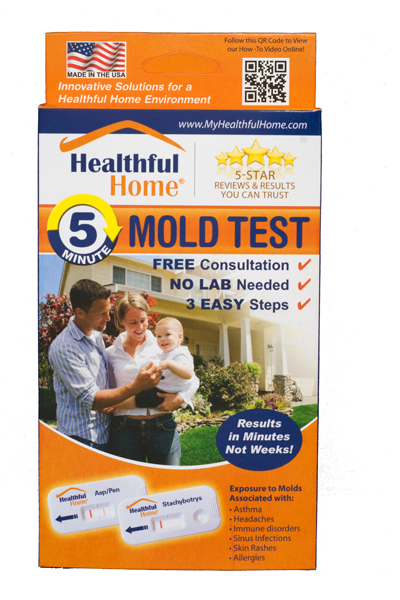Seven Places To Look For Hidden Mold Contamination In Your Home And What To Do If You Find It
Mold contamination in the home can develop into a real problem if left unchecked. Read this article to find out the hidden areas where mold can accumulate and learn the steps the prevent the mold from thriving in these places.
1. Inside The Front-Load Washing Machine
 Front loading washing machines have airtight doors that seal with a rubber gasket. This rubber gasket traps water before it leaks out of the machine during operation. But after the wash is done and the door is closed, water still remains in the gasket. This provides the perfect breeding ground for mold growth. To prevent the mold from growing, wipe the gasket dry with a clean cloth and leave the door open to air out the inside of the washer.
Front loading washing machines have airtight doors that seal with a rubber gasket. This rubber gasket traps water before it leaks out of the machine during operation. But after the wash is done and the door is closed, water still remains in the gasket. This provides the perfect breeding ground for mold growth. To prevent the mold from growing, wipe the gasket dry with a clean cloth and leave the door open to air out the inside of the washer.
If the situation has already gotten out of hand, you may be faced with the blast of an awful smell when you open the washer door. When this happens, you can spray a mold growth inhibitor like Healthful Home’s Anti-Fungal Spray. It actually kills mold spores and prevents them from spreading. Continued use can help prevent future problems with mold growth.
2. Under Kitchen And Bathroom Sinks
 Under the kitchen sink is an often-overlooked place for mold growth. Faucets can develop small leaks over time that go unnoticed. Make it a point to clean out underneath both your kitchen and bathroom sinks, checking for evidence of water leaks and mold growth. If you notice dried, caked mineral deposits, this is a sure sign that water is leaking, then drying and leaving the minerals behind. This is an area that can quickly develop mold growth, and unfortunately, it can go unnoticed for a long time before it become obvious.
Under the kitchen sink is an often-overlooked place for mold growth. Faucets can develop small leaks over time that go unnoticed. Make it a point to clean out underneath both your kitchen and bathroom sinks, checking for evidence of water leaks and mold growth. If you notice dried, caked mineral deposits, this is a sure sign that water is leaking, then drying and leaving the minerals behind. This is an area that can quickly develop mold growth, and unfortunately, it can go unnoticed for a long time before it become obvious.
Clean out the area with warm water and a mild soap. Make sure to make repairs to leaky faucets. If mold shows early signs of developing, use a spray cleaner designed specifically for controlling mold growth. Do not use bleach as this is not effective. Healthful Homes’ Anti-Fungal Spray actually contains enzymes that break down the mold as well as the spores that can spur continued growth.
3. Behind Walls
 Water can often leak behind walls through the windows or other areas. If your gutters have not been thoroughly cleaned, water can back up during rain storms and leak behind walls without your knowing. Look carefully at your walls and ceilings for discolored areas or places where the wall board appears puckered. If you find an area like this, keep a close eye on it during future storms and note if the problem is worsening. If so, it may be time to open up the wall and make some repairs. This can be costly and time-consuming, but you can really save yourself from future situations that are far worse for both your health and your finances.
Water can often leak behind walls through the windows or other areas. If your gutters have not been thoroughly cleaned, water can back up during rain storms and leak behind walls without your knowing. Look carefully at your walls and ceilings for discolored areas or places where the wall board appears puckered. If you find an area like this, keep a close eye on it during future storms and note if the problem is worsening. If so, it may be time to open up the wall and make some repairs. This can be costly and time-consuming, but you can really save yourself from future situations that are far worse for both your health and your finances.
Always make sure that your gutters are clean and windows are caulked and sealed to prevent water infiltration.
4. Behind Refrigerators And Dishwashers
Refrigerators that have a connecting wire to a water source for ice makers and front-door water disbursement can develop slow leaks over time. It’s a good idea to pull back your refrigerator from time to time and check for leaks. This could be an area prone to hidden mold growth.
Dishwashers have been known to leak water that flows to the back of the unit against the wall. You don’t often notice these leaks until it is too late. Look for areas in the basement that are directly beneath the dishwasher to see if there are any signs of water damage. If you find water coming into the basement in this area, it is time to pull the dishwasher out and check for leaks. Mold growth in these areas can cause sickness, without your even knowing it is there.
The dangerous “black mold” called Stachybotrys can grow uncontrollably in non-ventilated places and require expensive mold remediation specialists to remedy the problem.
5. In Attics
Mold problems can easily exist in the attic of your home and go unnoticed for years. Roof leaks can definitely lead to mold growth. You can often identify a roof leak by the appearance of water stains on your ceiling.
Improper attic ventilation can easily lead to mold growth. The rule of thumb is you need 1 square foot of ventilation for every 150 square feet of attic floor space. Air from inside the home from showering, cooking, bathing etc. easily travels up into the attic. If ventilation is poor, the moisture gets trapped and can lead to mold problems.
It’s critical to remember not to cover up vents with insulation. Insulation that runs all the way to the roof line can cover soffit vents. The soffit vents provide critical air intake that forces air flow out of the roof vents. When the soffit vents are covered, the air in the attic becomes stagnant and mold growth is inevitable.
During the winter months the exhaust from your bathroom after showering travel up the exhaust vent. The moisture can become frozen and trapped inside the vent pipe. When the weather warms up, the frozen moisture inside the vent can cause condensation on the outside of the vent. This condensation easily drips down to the insulation and can fuel mold growth.
If you live in an area that freezes during winter, it’s a good idea to insulate your attic ventilation pipes and vents so that condensation does not develop.
6. In Basements And Crawlspaces
After heavy rains we may look in our basement for water and find nothing. But just a little bit of water leaking in can cause mold growth. If your gutters are not properly cleaned, water can spill out like a waterfall in certain areas outside of the home. This water can move immediately inside the basement without your even knowing it. Inspect the walls and floor carefully for water stains where water may have come in and dried. These are the areas that would be most susceptible to mold.
To take care of this problem, clean your gutters regularly. You can also buy longer extension drains that connect to your downspouts and lead rainwater further away from the foundation. Over time the grade that should slope down away from your home can erode and work backwards to lead rainwater back to the foundation. To prevent hidden mold growth, check to make sure this situation is not occurring.
7. In House Plants
 House plants, because they live in moist soil, can really attract mold growth. To avoid mold growth in house plants, make sure that you do not over water the plant, provide adequate sunlight and clean out dead plant material from the soil base. You can also mix in a natural anti-fungal ingredient like cinnamon into the soil to prevent future mold growth.
House plants, because they live in moist soil, can really attract mold growth. To avoid mold growth in house plants, make sure that you do not over water the plant, provide adequate sunlight and clean out dead plant material from the soil base. You can also mix in a natural anti-fungal ingredient like cinnamon into the soil to prevent future mold growth.





